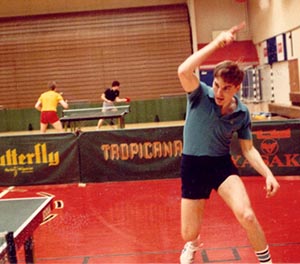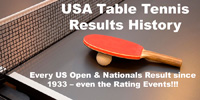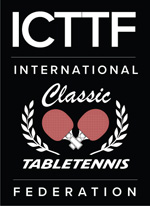Tip of the Week
For a while I've been bothered by two blog posts that really should have been Tips of the Week. As blog items, they were read and then lost in the avalanche of daily blog postings. As Tips of the Week, they'd be more accessible in the future as coaching articles. Since I'm currently working eight hours a day with Tim Boggan on the page layouts and photo work for his History of U.S. Table Tennis, Vol. 12, as well as my usual coaching and other duties, I'm going to take today and next Monday to put these two items, with some updating/expansion, as Tips. So here is: Proper Use of the Free Arm.
Shadow practice
Do you only practice at your local club, or do you practice whenever the urge hits you? You can practice anywhere by shadow practicing. It's also a great way to exercise and to wake yourself up from long hours sitting at a desk. (It's also a nice to practice proper use of your free arm - see Tip above.) Here's an article I wrote a while back on shadow-practicing. So get up from your computer and start stroking!
Arm Update
The arm is getting better, but still needs more time to heal. (I injured my forearm about a week ago.) I still can't forehand hit or loop aggressively. Yesterday I coached much of the day, but did almost exclusively backhands and multiball. One student, Kevin Walton, lent me an arm brace which seemed to help, but when using the muscles for certain shots it was like having someone grabbing my arm in mid-stroke. It's great to protect the arm when hitting (tentative) forehands, but when hitting backhands or feeding backspin in multiball, I had to take it off.


 Photo by Donna Sakai
Photo by Donna Sakai




